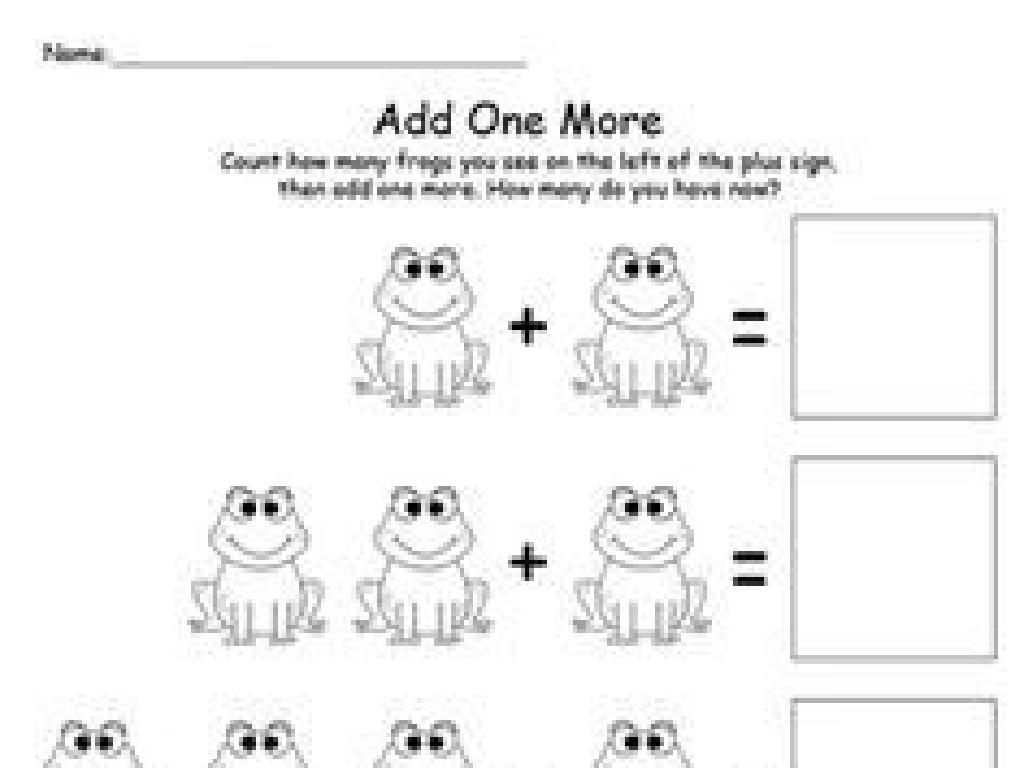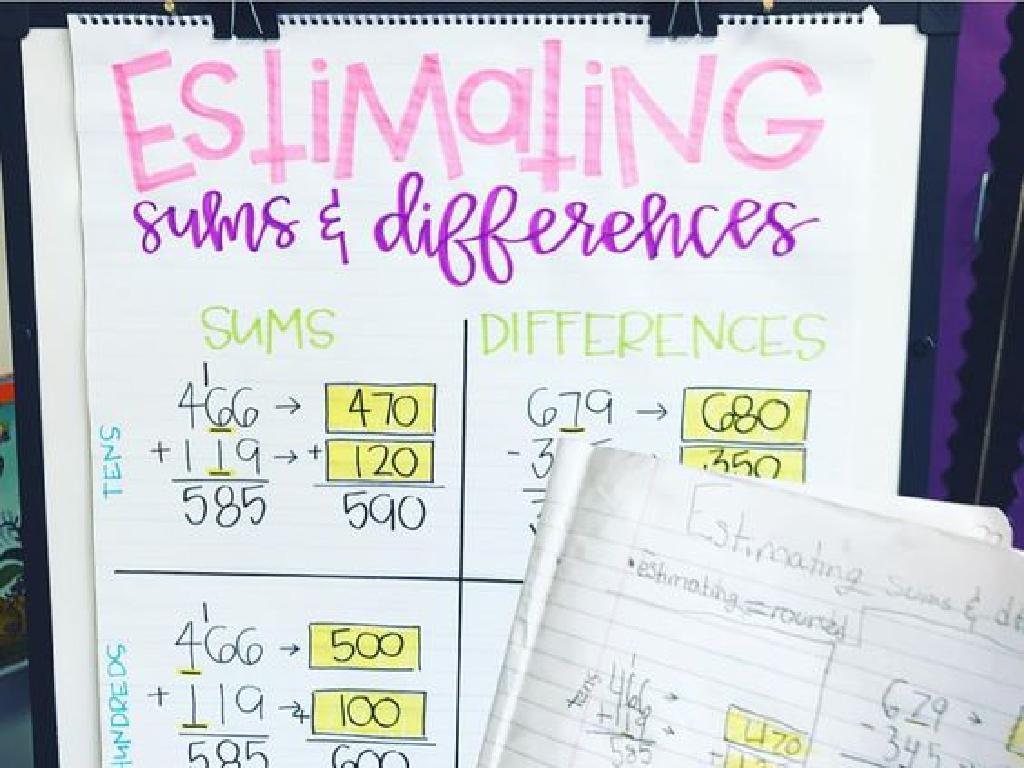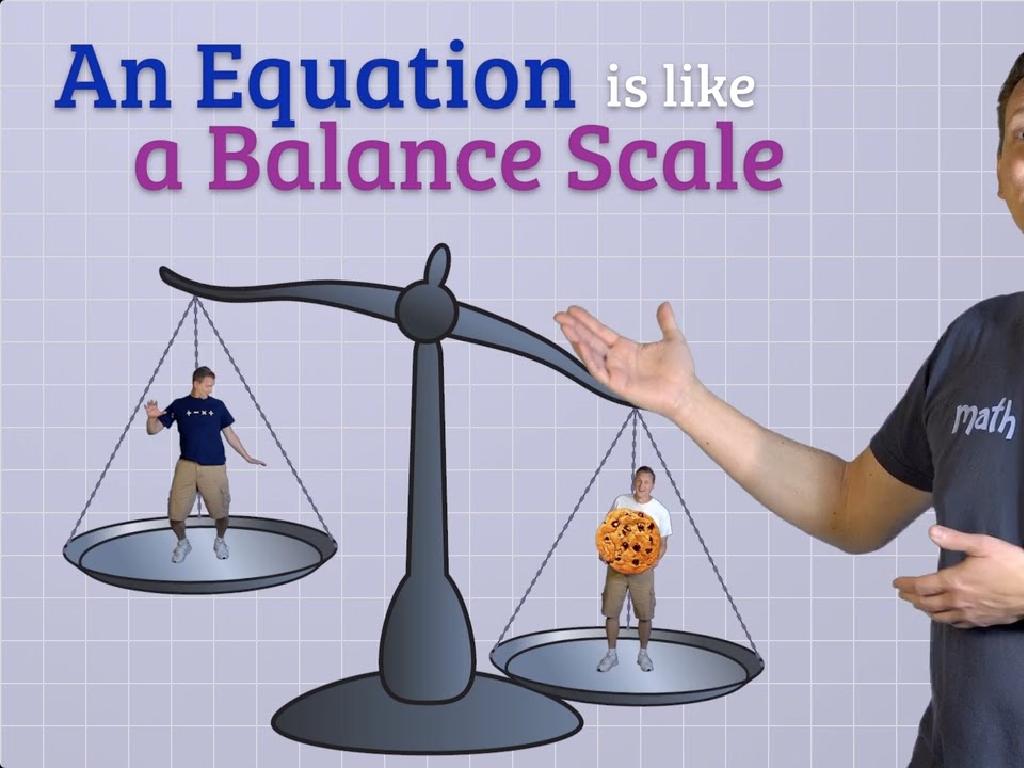Find The Next Row In A Growing Pattern
Subject: Math
Grade: First grade
Topic: Patterns
Please LOG IN to download the presentation. Access is available to registered users only.
View More Content
Welcome to Patterns!
– Greetings First Graders!
– Today’s topic: growing patterns
– A growing pattern gets bigger in a sequence
– Patterns exist everywhere
– Nature, art, and music show patterns
– Let’s find the next pattern row
– We’ll use objects to add to patterns
|
This slide is an introduction for first graders to the concept of growing patterns. Emphasize the ubiquity of patterns in the world around us, from leaves on a tree to rhythms in songs. Explain that a growing pattern is a sequence that increases based on a rule. During the lesson, use tangible objects like blocks or beads to create visual and interactive examples of growing patterns. Encourage the students to observe and predict what comes next in a pattern. The goal is to make them comfortable with the idea of patterns and to understand that they can create and extend them.
Understanding Patterns
– What is a pattern?
– A pattern repeats in a predictable way
– Patterns use shapes, colors, numbers
– Like red, blue, red, blue or circle, square, circle
– Examples of simple patterns
– We’ll see patterns with objects we know
– Finding the next part in patterns
– We’ll practice predicting what comes next
|
This slide introduces the concept of patterns to first-grade students. Begin by explaining that a pattern is a sequence that repeats in a way we can predict. Show them that patterns can be made with different things like shapes, colors, or numbers. Use visual examples that are easy for them to understand, such as alternating colors or shapes. After going through some examples, encourage the students to try and find the next item in a pattern. This will help them grasp the concept of patterns and how they work. Make sure to use simple and relatable examples for their age group, and provide plenty of encouragement as they learn to recognize and extend patterns.
Understanding Growing Patterns
– Growing patterns increase
– Patterns that get larger in a consistent manner
– Each step adds more
– Look at each row and see how it changes
– Observe what’s added
– Find the rule by looking at the changes
– Predict the next step
|
This slide introduces the concept of growing patterns to first-grade students. Begin by explaining that a growing pattern is a sequence that becomes larger following a specific rule. Show them simple visual examples, like adding one block to a tower in each step. Ask the students to observe the changes from one step to the next and try to determine what is being added each time. Encourage them to use this observation to guess what the next step in the pattern will be. This activity will help them understand the concept of patterns and prepare them for more complex pattern recognition in the future.
Finding the Rule in Patterns
– Patterns follow rules
– Like a secret code that guides the pattern
– Rules show pattern growth
– It’s like a recipe for making the pattern bigger!
– Practice finding the rule
– Let’s try with some examples together
|
This slide introduces the concept of rules in patterns to first-grade students. Begin by explaining that patterns are like a game where each step follows a special secret code, which we call the rule. This rule helps us predict what comes next. Show simple examples of patterns, such as adding one more block to a tower or one more bead to a necklace each time. Then, practice with the class by presenting a few patterns and working together to find the rule. For instance, if we have a pattern of shapes like circle, circle, square, circle, circle, square, ask the students what they think comes next and why. Encourage them to explain how they figured out the rule. This interactive approach will help them grasp the concept of growing patterns and prepare them for identifying the next row in a pattern.
Creating Our Own Patterns
– It’s time to make a pattern!
– Decide on a pattern rule
– A rule like ‘add one more’
– Start with a few items
– Maybe begin with 2 blocks
– Watch your pattern grow!
– Add blocks and see the change
|
This slide is designed to engage first-grade students in an interactive activity where they create their own growing patterns. Encourage them to think creatively and decide on a simple rule for their pattern, such as adding one more item each time. They should start with a small number of items, like two blocks, and then add more according to their rule to see the pattern expand. Provide various materials like blocks, stickers, or drawings for this activity. As they work, walk around the classroom to observe and assist. Afterward, have students share their patterns with the class to demonstrate their understanding of growing patterns. This hands-on experience reinforces their learning and makes abstract concepts concrete.
Predict the Next Row in a Pattern
– Observe the pattern carefully
– Think about the pattern’s rule
– Is it adding or taking away something?
– Guess what comes next
– Use your guess to find the next part
– Let’s solve the next row together
– We’ll use clues to find the answer
|
This slide is aimed at helping first graders understand the concept of growing patterns. Start by showing them a simple pattern and ask them to look at it closely. Encourage them to verbalize the rule of the pattern, such as ‘add one more’ or ‘take one away’. Then, ask them to predict what the next row or part of the pattern will look like based on the rule they’ve identified. Work through an example together as a class, using the rule to extend the pattern. Provide guidance and positive reinforcement as they make predictions. This activity will help develop their analytical and problem-solving skills in a fun and interactive way.
Class Activity: Pattern Builders
– Work in groups to create patterns
– Use blocks to build your pattern
– Share and explain your pattern
– Show your pattern to the class and describe what rule you used
– Discover the pattern rule
– How does your pattern grow? What comes next?
|
This activity is designed to help students recognize and create growing patterns using tangible objects like blocks. Divide the class into small groups and provide each group with a set of blocks. Encourage them to arrange the blocks in a sequence that grows by adding more blocks according to a rule they decide. Once the patterns are created, each group will present their pattern to the class and explain the rule behind it. For example, one group might add one more block to each new row, another might add two, and so on. This exercise will enhance their understanding of sequences and allow them to practice explaining their thought process. Possible activities for different groups could include creating patterns with different shapes, colors, or sizes of blocks to add variety and challenge.
Reviewing Growing Patterns
– Review our pattern creations
– Discover the rules in patterns
– Look at a friend’s pattern and guess how it grows
– Applaud our pattern learning
– Get ready to share with the class
– Think about how you found the next row in your pattern
|
This slide is meant to recap what we’ve learned about identifying and extending growing patterns. Start by having students look at the patterns they’ve created and discuss what they see. Encourage them to explain the rule of their pattern to the class. Then, have them exchange patterns with a friend to see if they can determine the rule of someone else’s pattern. Praise the students for their hard work and understanding of growing patterns. Prepare them for a sharing session where they will present their patterns and the rules they’ve discovered to the class. This will help reinforce their understanding and give them practice in articulating mathematical concepts.
Patterns Around Us
– Patterns help predict the world
– Great job finding patterns!
– Patterns exist all around us
– Nature, art, music, daily routines
– Keep looking for patterns
– Practice makes perfect in spotting them
|
As we wrap up our lesson on patterns, it’s important to emphasize to the students how patterns are a fundamental part of our environment and daily lives. They help us make predictions and understand the world in a structured way. Congratulate the students on their hard work during the lesson in identifying and creating patterns. Encourage them to continue observing the world around them for patterns, whether in nature, art, music, or even their daily routines. Reinforce the idea that the more they look for patterns, the better they’ll get at spotting them. This will not only aid their mathematical understanding but also enhance their observational skills.






